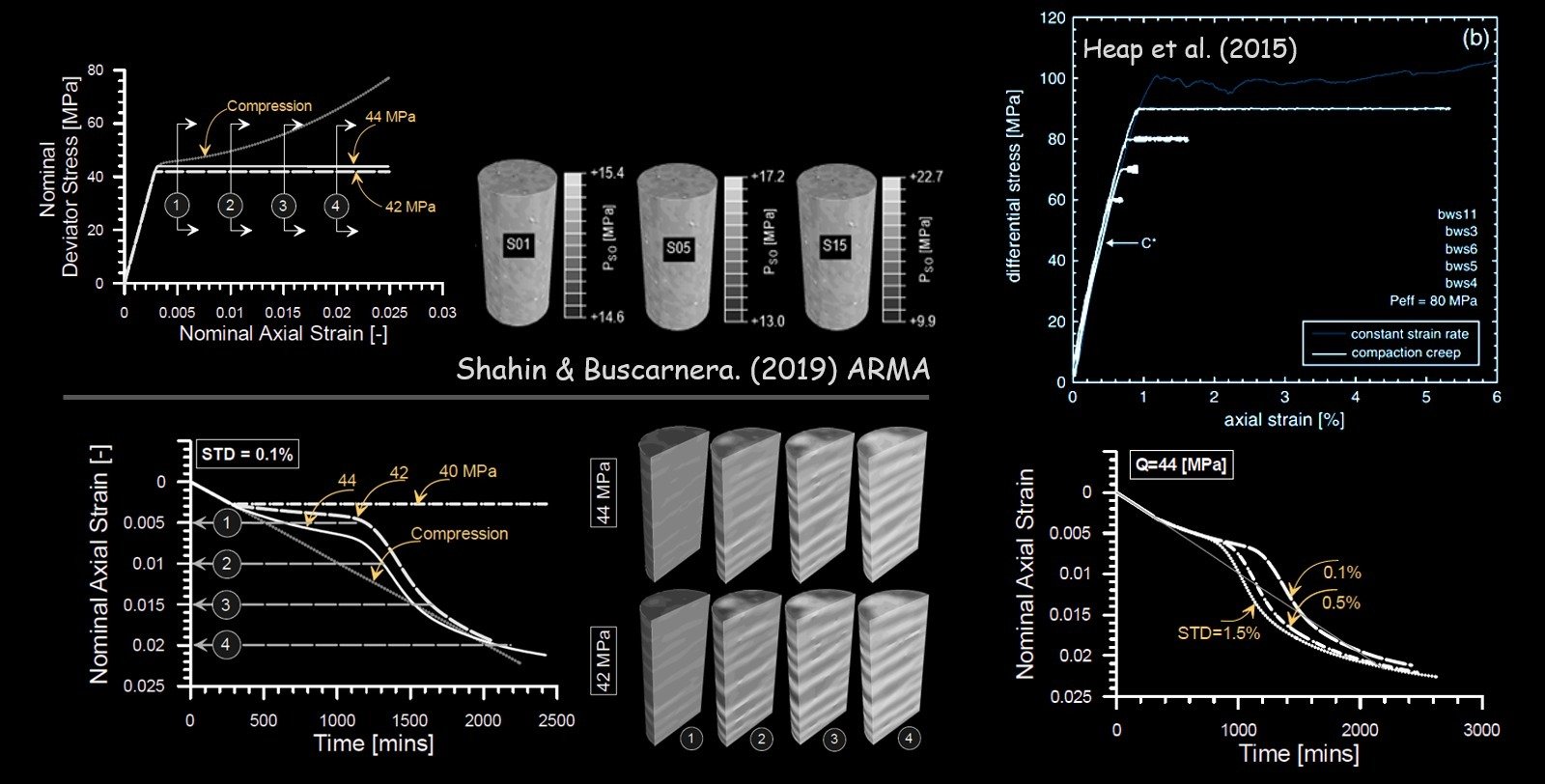Numerical simulation of localized compaction creep in heterogeneous porous rock

Creep is an inelastic mechanism with severe implications on the long-term mechanics of fluid-bearing reservoirs and underground geophysical systems. In the context of porous rocks, recent experimental studies have shown that such class of geomaterials may exhibit delayed inelasticity if deformed in the compaction banding regime. In such circumstances, compaction banding results from the interaction between the rock heterogeneity and the temporal evolution of its mechanical properties. In this paper numerical analyses based on the Finite Element method are conducted to investigate the influence of the spatial heterogeneity of the material on the onset and development of localized compaction creep. For this purpose, an elastoplastic constitutive law able to replicate strain localization has been adapted to a rate-dependent formalism, thus enabling the simulation of creep. Numerical analyses of triaxial compression tests have then been conducted by varying the statistical attributes of the rock heterogeneity. The simulations revealed that spatial variations of yielding resistance provide a hotspot for viscoplastic strain, eventually affecting the spatiotemporal patterns of propagating compaction zones. Most notably, it was found that relatively small fluctuations from the average rock properties may generate non-negligible delayed compaction, as well as strain localization. These results emphasize the importance of the natural heterogeneity in the simulation of compaction, especially in case of highly porous reservoir rocks.
Download from researchgate.net or onepetro.org